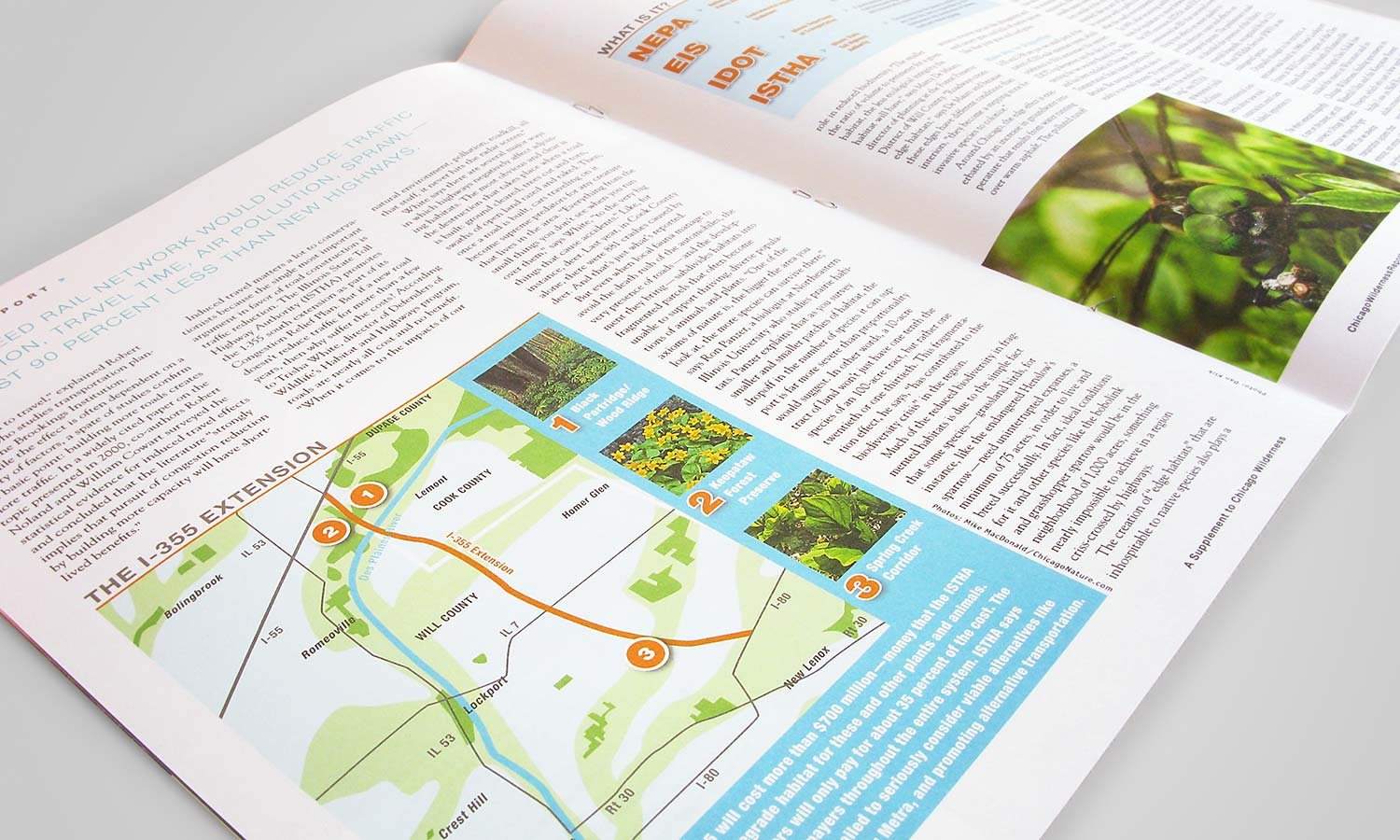
CASE STUDY
Finding Chicago Wilderness
Chicago Wilderness is a regional alliance of over 250 member organizations working to preserve, improve, and expand nature and quality of life. Over the course of several years, we transformed the alliance’s public-facing magazine as well as the parent brand.
Chicago Wilderness, when we first met, was composed of two distinct but closely related entities: 1) a very loosely structured regional alliance of over 200 NFPs, government bodies, and corporations committed to protecting local nature; and 2) a newsstand magazine founded to inform and unite both alliance members and non-member nature enthusiasts.
We began our engagement by redesigning the magazine, converting it from its original folksy roots to a sleeker coffee table magazine similar in style to National Geographic, Audubon, or Smithsonian.
Throughout our relationship, we worked closely with Editor & Founder Debra Shore, along with the rest of her staff, to brainstorm on improvements, help develop the editorial agenda, select or commission photos, and continually raise the bar on content quality and visual presentation. Within months of the magazine’s makeover, we produced a similar makeover for the website.
Later projects included a series of special issues and microsites funded by Grand Victoria Foundation and Gaylord & Dorothy Donnelley Foundation.
During this period, the CW alliance also grew rapidly, adding both NFP and corporate members, but by 2008 realized it had no clear brand platform and practically no recognition in the public realm, unlike the magazine. We rebranded the organization in much the same way we had rejuvenated their publication. Research, rebranding, and print and web deliverables all needed to be completed quickly and in synchrony.
In collaboration with PR firm PCI, Jell helped design, monitor, and analyze four focus groups across the region. Findings and brand program recommendations were presented in four meetings, often webcast, to different sets of CW alliance stakeholders, with audiences of 30–60 members.
We addressed member concerns, offered design iterations, and built a strong consensus within three weeks.
We then executed the entire rebranding rapidly, with all deliverables in place and on time for a major annual congress at the Field Museum.







